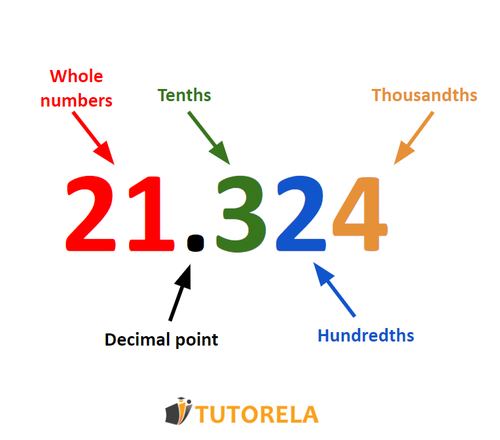The decimal number represents, through the decimal point (or comma in certain countries), a simple fraction or a number that is not whole.
The decimal point divides the number in the following way:

You can read more in the assigned extended article
Master advanced decimal fractions with step-by-step practice problems. Convert decimals to fractions, multiply and divide decimals, and solve real-world applications.
The decimal number represents, through the decimal point (or comma in certain countries), a simple fraction or a number that is not whole.
The decimal point divides the number in the following way:

You can read more in the assigned extended article
Determine whether the exercise is correctly written or not.
The position of the decimal point corresponds.
Determine whether the exercise is correctly written or not.
True or false:
The positions of the decimal points correspond.
First let's fill in the zeros in the empty spaces as follows:
Note that the decimal points are written one below the other.
Therefore, the positions of the decimal points correspond and thus the exercise is written in the correct form.
Answer:
True
Determine whether the exercise is written correctly:
Is the position of the decimal point correct in each number?
First let's fill the zeros in the empty space as follows:
Here We should note that the decimal points are written one below the other.
Therefore, the exercise is written in the appropriate form.
Answer:
Yes
Reduce the following fraction:
If you have a fraction like , you can simplify it by removing all the trailing zeros. Thus, it reduces down to . All the trailing zeros to the right of the decimal point in a number can be eliminated without changing the value of the number.
Answer:
Let's solve the subtraction problem step by step:
Thus, the solution to the problem is .
Answer:
0.9
Determine whether the exercise is correctly written or not.
Note that the decimal points are not written one below the other. They do not correspond.
Therefore, the exercise is not written correctly.
Answer:
Not true